Suin Lee
TexTailor: Customized Text-aligned Texturing via Effective Resampling
Jun 12, 2025Abstract:We present TexTailor, a novel method for generating consistent object textures from textual descriptions. Existing text-to-texture synthesis approaches utilize depth-aware diffusion models to progressively generate images and synthesize textures across predefined multiple viewpoints. However, these approaches lead to a gradual shift in texture properties across viewpoints due to (1) insufficient integration of previously synthesized textures at each viewpoint during the diffusion process and (2) the autoregressive nature of the texture synthesis process. Moreover, the predefined selection of camera positions, which does not account for the object's geometry, limits the effective use of texture information synthesized from different viewpoints, ultimately degrading overall texture consistency. In TexTailor, we address these issues by (1) applying a resampling scheme that repeatedly integrates information from previously synthesized textures within the diffusion process, and (2) fine-tuning a depth-aware diffusion model on these resampled textures. During this process, we observed that using only a few training images restricts the model's original ability to generate high-fidelity images aligned with the conditioning, and therefore propose an performance preservation loss to mitigate this issue. Additionally, we improve the synthesis of view-consistent textures by adaptively adjusting camera positions based on the object's geometry. Experiments on a subset of the Objaverse dataset and the ShapeNet car dataset demonstrate that TexTailor outperforms state-of-the-art methods in synthesizing view-consistent textures. The source code for TexTailor is available at https://github.com/Adios42/Textailor
MMR: A Large-scale Benchmark Dataset for Multi-target and Multi-granularity Reasoning Segmentation
Mar 18, 2025Abstract:The fusion of Large Language Models with vision models is pioneering new possibilities in user-interactive vision-language tasks. A notable application is reasoning segmentation, where models generate pixel-level segmentation masks by comprehending implicit meanings in human instructions. However, seamless human-AI interaction demands more than just object-level recognition; it requires understanding both objects and the functions of their detailed parts, particularly in multi-target scenarios. For example, when instructing a robot to \textit{turn on the TV"}, there could be various ways to accomplish this command. Recognizing multiple objects capable of turning on the TV, such as the TV itself or a remote control (multi-target), provides more flexible options and aids in finding the optimized scenario. Furthermore, understanding specific parts of these objects, like the TV's button or the remote's button (part-level), is important for completing the action. Unfortunately, current reasoning segmentation datasets predominantly focus on a single target object-level reasoning, which limits the detailed recognition of an object's parts in multi-target contexts. To address this gap, we construct a large-scale dataset called Multi-target and Multi-granularity Reasoning (MMR). MMR comprises 194K complex and implicit instructions that consider multi-target, object-level, and part-level aspects, based on pre-existing image-mask sets. This dataset supports diverse and context-aware interactions by hierarchically providing object and part information. Moreover, we propose a straightforward yet effective framework for multi-target, object-level, and part-level reasoning segmentation. Experimental results on MMR show that the proposed method can reason effectively in multi-target and multi-granularity scenarios, while the existing reasoning segmentation model still has room for improvement.
Cosine Similarity Knowledge Distillation for Individual Class Information Transfer
Nov 24, 2023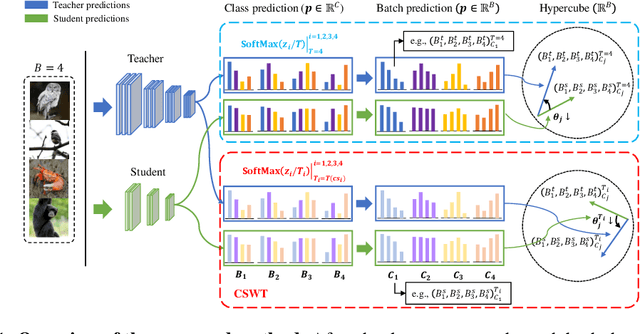



Abstract:Previous logits-based Knowledge Distillation (KD) have utilized predictions about multiple categories within each sample (i.e., class predictions) and have employed Kullback-Leibler (KL) divergence to reduce the discrepancy between the student and teacher predictions. Despite the proliferation of KD techniques, the student model continues to fall short of achieving a similar level as teachers. In response, we introduce a novel and effective KD method capable of achieving results on par with or superior to the teacher models performance. We utilize teacher and student predictions about multiple samples for each category (i.e., batch predictions) and apply cosine similarity, a commonly used technique in Natural Language Processing (NLP) for measuring the resemblance between text embeddings. This metric's inherent scale-invariance property, which relies solely on vector direction and not magnitude, allows the student to dynamically learn from the teacher's knowledge, rather than being bound by a fixed distribution of the teacher's knowledge. Furthermore, we propose a method called cosine similarity weighted temperature (CSWT) to improve the performance. CSWT reduces the temperature scaling in KD when the cosine similarity between the student and teacher models is high, and conversely, it increases the temperature scaling when the cosine similarity is low. This adjustment optimizes the transfer of information from the teacher to the student model. Extensive experimental results show that our proposed method serves as a viable alternative to existing methods. We anticipate that this approach will offer valuable insights for future research on model compression.
Maximizing Discrimination Capability of Knowledge Distillation with Energy-based Score
Nov 24, 2023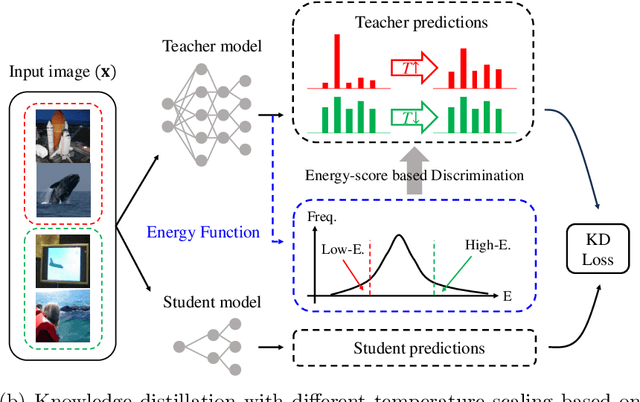
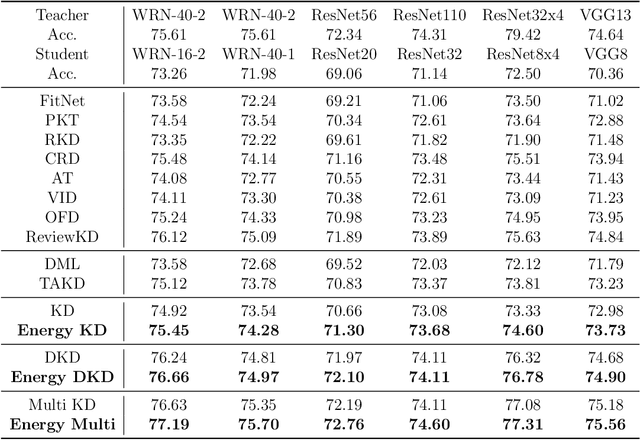
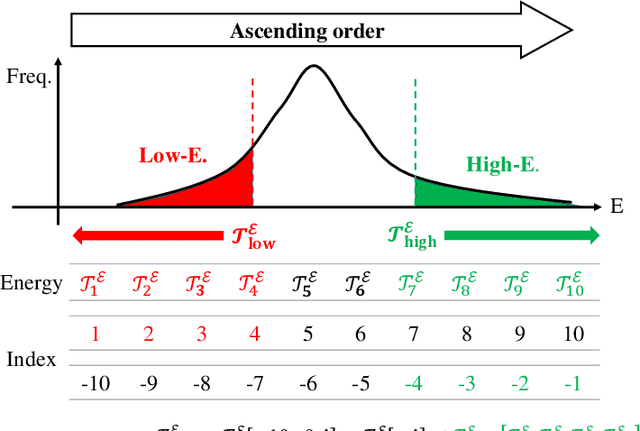
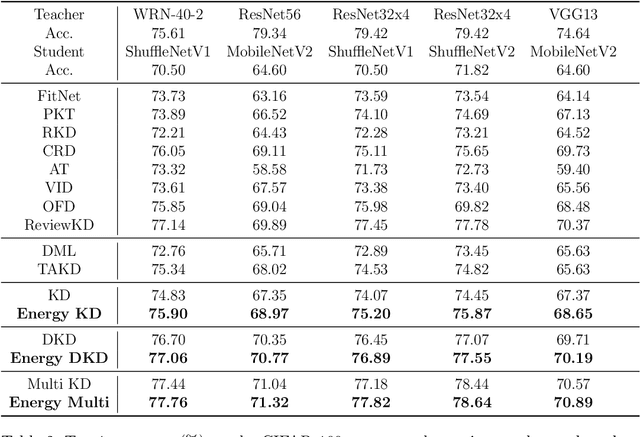
Abstract:To apply the latest computer vision techniques that require a large computational cost in real industrial applications, knowledge distillation methods (KDs) are essential. Existing logit-based KDs apply the constant temperature scaling to all samples in dataset, limiting the utilization of knowledge inherent in each sample individually. In our approach, we classify the dataset into two categories (i.e., low energy and high energy samples) based on their energy score. Through experiments, we have confirmed that low energy samples exhibit high confidence scores, indicating certain predictions, while high energy samples yield low confidence scores, meaning uncertain predictions. To distill optimal knowledge by adjusting non-target class predictions, we apply a higher temperature to low energy samples to create smoother distributions and a lower temperature to high energy samples to achieve sharper distributions. When compared to previous logit-based and feature-based methods, our energy-based KD (Energy KD) achieves better performance on various datasets. Especially, Energy KD shows significant improvements on CIFAR-100-LT and ImageNet datasets, which contain many challenging samples. Furthermore, we propose high energy-based data augmentation (HE-DA) for further improving the performance. We demonstrate that meaningful performance improvement could be achieved by augmenting only 20-50% of dataset, suggesting that it can be employed on resource-limited devices. To the best of our knowledge, this paper represents the first attempt to make use of energy scores in KD and DA, and we believe it will greatly contribute to future research.
 Add to Chrome
Add to Chrome Add to Firefox
Add to Firefox Add to Edge
Add to Edge